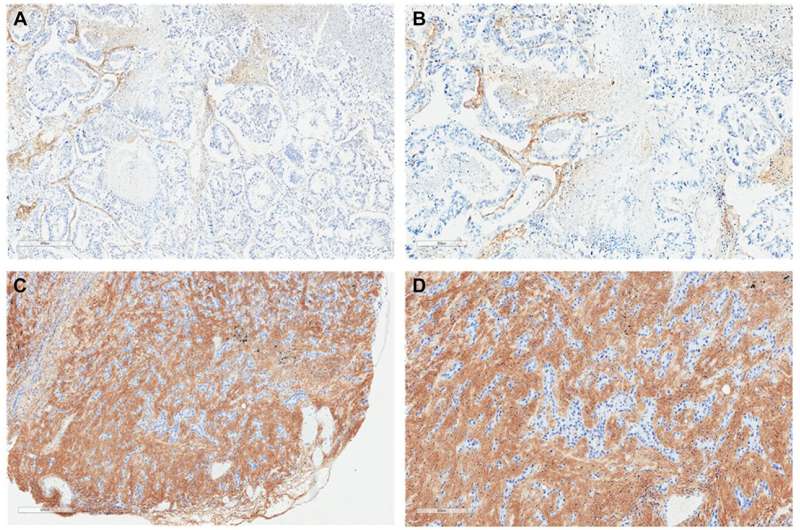Tumor hyaluronan as a novel biomarker in non-small cell lung cancer: A retrospective study

Hyaluronan (HA) accumulation is associated with tumorigenesis and aggressive tumor behavior. In a new study, researchers Jun Gong, Michelle Guan, Haesoo Kim, Natalie Moshayedi, Sejal Mehta, Galen Cook-Wiens, Brent K. Larson, Jenny Zhou, Rishi Patel, Isaac Lapite, Veronica R. Placencio-Hickok, Richard Tuli, Ronald B. Natale, and Andrew E. Hendifar from Cedars-Sinai Medical Center and Memorial Sloan Kettering Cancer Center investigated the biomarker potential of HA in non-small cell lung cancer (NSCLC).
"The purpose of this study was to evaluate the significance of HA as a potential biomarker in NSCLC. Specifically, we investigated the prognostic and predictive value of tumor HA levels in a large cohort of predominantly advanced-stage NSCLC patients."
HA levels were scored using affinity histochemistry in 137 NSCLC samples stratified by HA score ≤10, 11–20, 21–30, and >30 with HA-high defined as ≥25% expression in the extracellular matrix (ECM) of the tumor surface area. Overall survival (OS) and time to progression from initiation of taxane therapy (TTP) were compared using log-rank tests based on HA score.
Of 122 patients with recurrent/metastatic NSCLC, 93 had mean HA scores that were not significantly different across clinicopathologic variables. Frequency of HA-high tumors did not differ by histology (34/68 adenocarcinomas vs. 12/25 squamous tumors, Fisher's p = 1.0000). Median OS for recurrent/metastatic adenocarcinoma was 35.5 months (95%, 23.6–50.3) vs. 17.9 months for squamous (95%, 12.7–37.0, log-rank test, p = 0.0165).
OS was not significantly different by HA quartiles, high or low (<25) HA score and tumor histology, and HA biopsy site (all p > 0.05). Median TTP (n = 98) significantly differed by HA quartile (2.8 months for HA score ≤10; 5.0 months for 11–20; 7.9 months for 21–30; 3.9 months for >30, p = 0.0265). Improved TTP trended in HA-high over HA-low tumors (n = 98, p = 0.0911).
"In this NSCLC cohort, tumor HA level represents a potential biomarker for TTP, which remains a cornerstone of NSCLC therapy. Further validation is warranted to identify the HA accumulation threshold associated with clinical benefit," say the researchers.
The research was published in Oncotarget.
More information: Jun Gong et al, Tumor hyaluronan as a novel biomarker in non-small cell lung cancer: A retrospective study, Oncotarget (2022). DOI: 10.18632/oncotarget.28304
















